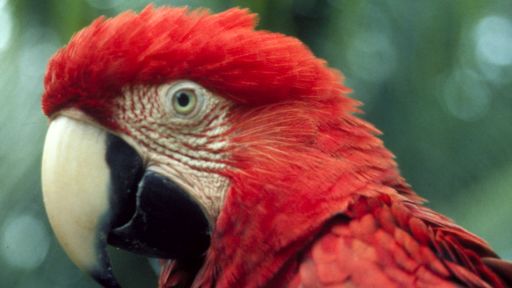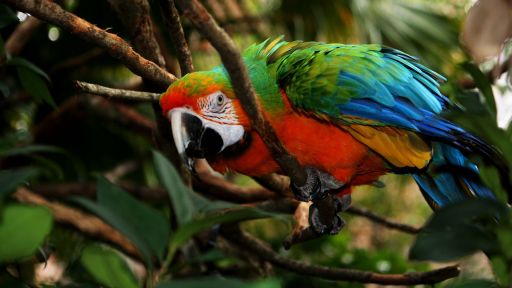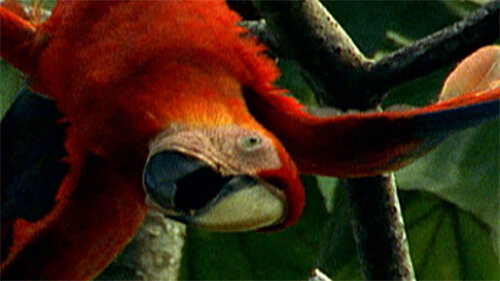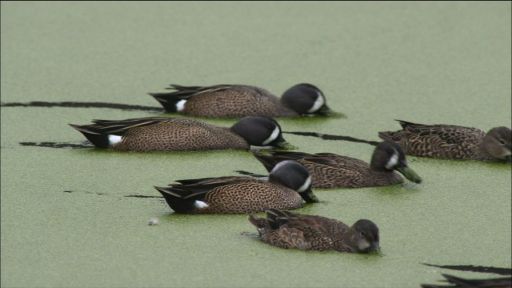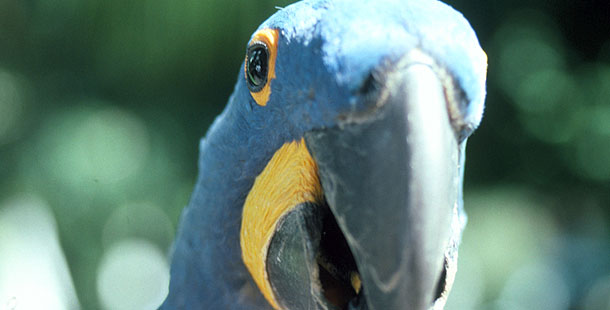
Deep in an isolated tropical forest, a small group of tourists creeps along a muddy trail. Suddenly, their guide gestures up. It takes a moment for the visitors to focus. Then, they see them: A flock of colorful, long-tailed macaws that draw gasps of pleasure and surprise. “Unforgettable,” gushes one of the crowd.
It’s not your ordinary vacation. But such wildlife adventures are becoming increasingly popular for “eco-tourists” interested in seeing and saving some of the planet’s most endangered animals. And as NATURE’s The Real Macaw shows, eco-friendly tourism may ultimately be key to protecting the world’s 17 species of macaws, nearly half of which are already considered seriously endangered.
The macaw’s problems are clear. Some species are losing their forest habitats to logging, farming, or development. Others are hunted by pet traders, who can make a financial killing in the global caged bird trade. The chicks of several kinds of “blue” macaws, for instance, can fetch thousands of dollars each from collectors in industrialized nations. A Lear’s macaw, of which there are fewer than 200 left in the world, can bring up to $60,000.
Now, conservationists are trying to create equally hefty financial incentives for leaving the birds and their habitat alone. One strategy is to use tourism fees to buy up and protect patches of forest where visitors can see the birds. Such reserves have sprung up around the world, including in Central and South American nations were macaws live. Some even have built lodges that cater to guests fixated on seeing a macaw — and employ local people who might once have had little choice but to clear the forest.
Another, more controversial, strategy is to transform macaw hunters into protectors, by hiring them as guides or wardens. It makes some sense: The poachers are often macaw experts, and know their habits inside and out. After all, their livelihoods once depended on finding the birds. And who would know better how to head off a new generation of hunters?
It’s too early to know whether such strategies will work everywhere. Experts say they are just one part of the solution that must also include strong enforcement of conservation and pet trade laws, far-sighted economic development, and education.
But one thing is already clear: The number of tourists interested in more than just another trip to the beach is growing. Last year, tourism experts say travelers spent more than $20 billion on eco-trips and related ventures. That’s still just a small share of the $500 billion-plus tourism marketplace. But in many regions, even small sums can make a big difference to conservation efforts.
Of course, as eco-tourism’s popularity grows, some travel operators have tried to cash in — without funneling benefits back to local communities or wildlife. So if you want to make sure your travel dollar is doing extra duty, do your homework. Ask exactly how your spending will benefit wildlife, and how local people benefit. Make sure that guides aren’t “killing the golden goose” — by bringing in so many visitors, for instance, that rare birds are scared away from their home ranges.
Macaw conservationists are hoping that, in the long run, such educated travelers can create “win-win-win” situations, where local people make a living, visitors get the thrill of lifetime, and the macaws have an opportunity to live in peace.

